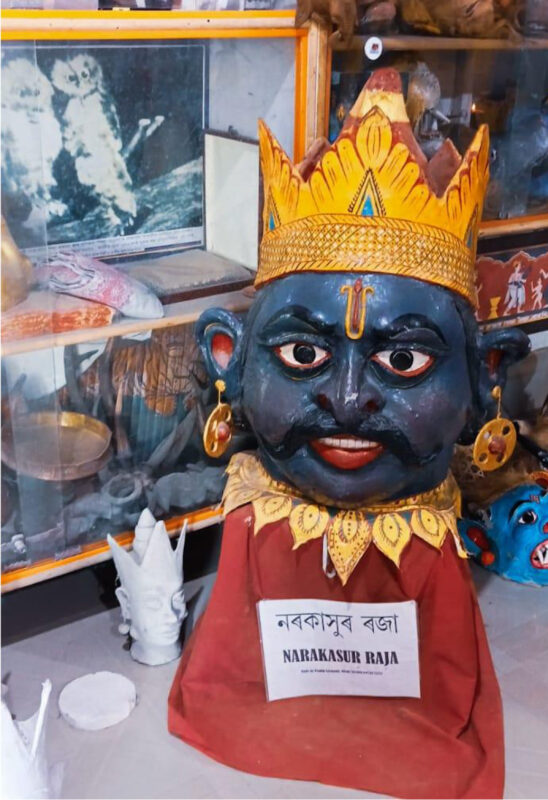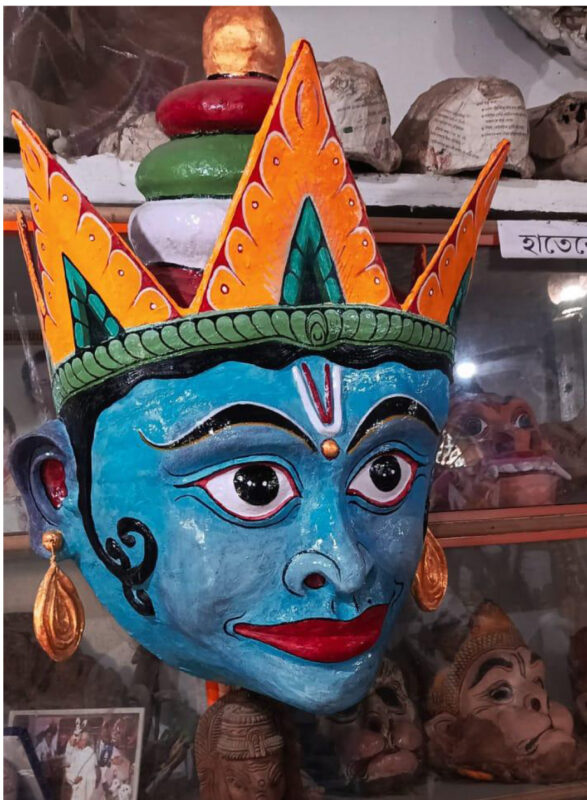Planning a Trip to Majuli? Read This First!
Did you know that Majuli is the world's largest river island?
Majuli Island, situated in the state of Assam, holds the title of both the world’s largest river island and India’s first island district. Known for its breathtaking natural beauty and the unique experience of being surrounded by the mighty Brahmaputra River, visiting Majuli is truly exciting.
Located near Jorhat in Assam, Majuli is cradled by two rivers: the mighty Brahmaputra in the south and the Kherkutia Xuti, which joins the Subansiri in the north.
But Majuli is more than just its geography.
To fully enjoy your trip and experience all that this remarkable island has to offer, here are a few key things to keep in mind before you go. These insights will help you plan better and ensure you don’t miss out on any part of the Majuli experience.
How to Reach Majuli: The Journey is Half the Adventure
To reach Majuli, the first step is to travel to Jorhat, the closest access point. You can take a train or a flight from Guwahati to Jorhat. From there, travel by road to Nimati Ghat, the ferry terminal.
The next part of the journey is quite thrilling. You will take a ferry ride across the Brahmaputra River to reach Majuli Island.
Ferries are the only way to reach Majuli, adding a unique sense of adventure to the trip.
The Cultural Heart of Assam
Majuli is a vibrant blend of people, cultures, and traditions.
Home to a diverse demographic, it attracts visitors from all over the world and is considered one of the most popular tourist destinations in Assam. The island is rich in art, culture, and heritage, with Hinduism being the predominant religion.
Majuli is inhabited by various ethnic communities, including the Mising, Deori, Sonowal Kacharis, Koch, Ahom, and many others, each contributing to the island’s cultural richness.
The Spiritual Soul of Majuli: Satras
Majuli serves as a hub of Vaishnavism. It is home to numerous Satras. But what are they?
Central to the Ekasarana Dharma tradition, Satras are much more than just religious institutions.
While they are deeply spiritual spaces, Satras also serve as vibrant hubs of culture, tradition, and performing arts. They are places where faith meets creativity. From the graceful movements of Sattriya dance to the powerful storytelling of Bhaona (performance of an Ankiya Nat or a one-act play) performances, Satras keep Assam’s rich heritage alive. They not only preserve sacred teachings and rituals but also celebrate the living culture of the region through music, drama, literature, and visual art.
In every sense, Satras are the heartbeat of Majuli’s cultural identity.
Majuli has around 22 active Satras, with Auniati, Dakhinpat, and Garmur being the central ones. A visit to Majuli is incomplete without exploring these places, where you can witness the island’s deep-rooted religion and culture up close.

Can a Place Really Feel This Peaceful?
As soon as I stepped off the ferry at Kamalabari Ghat, I was welcomed with warm smiles and open arms by a friend’s relatives. They took me straight to their home, where the kindness and hospitality of Majuli instantly made me feel like I belonged. There is something about this island that puts you at ease the moment you arrive.
The next morning, our journey began with a visit to the Satras, the heart and soul of Majuli’s spiritual and cultural life. Our first stop was Auniati Satra, established in 1653 by the Ahom King Jayaddhaja Singha. Known for its deep Vaishnavite traditions, this sacred place has been a center of devotion, learning, and culture for centuries. As I sat through the daily prayer ritual, which has been held every day for over 350 years, I could feel a calmness settle in. The chants, the quiet discipline, and the peaceful surroundings created a powerful sense of connection.
There, I met Mr. Nitul Dutta, a Bhakat or devotee of the Satra, whose stories brought the history of Auniati to life. He shared the tale of the idol of Lord Krishna brought from Puri and spoke passionately about the Satra’s role in preserving literature, music, and tradition.
We continued our exploration with visits to Sri Sri Natun Kamalabari Satra, Purani Kamalabari Satra, Sri Sri Garmur Satra, and Sri Sri Dakhinpat Satra. Each one had its atmosphere, stories, and beautiful architecture. You could feel the spirit of the island in every corner.
At Samuguri Satra, I was fascinated by the art of mask-making. These masks are used in bhaona, a traditional form of storytelling through dance and drama. Watching the artisans work with such care and dedication felt like stepping into a living tradition passed down through generations.
Celebrate Life: Majuli's Festivals
If you visit Majuli in November, you are in luck. This is when the island celebrates Raas Mahotsav, a grand festival that honors the life of Lord Krishna through elaborate performances.
The festival features the famous Bhaona plays, which portray scenes from Krishna’s life. During this time, the entire island comes alive, drawing devotees and tourists from across India and beyond.
Majuli also hosts several other local celebrations. If you are lucky, you might witness Ali Ai Ligang, the most important and popular festival of the tribal Mising community, which is celebrated annually.
Another major event is Paalnam, one of the most significant Satriya festivals on the island. This festival is held every December.
Mukha Shilpa
One of the most unique and celebrated aspects of Majuli’s cultural identity is its traditional mask-making art, known as Mukha Shilpa.
This ancient craft is closely tied to the Sattriya culture of the island and traces its origins back to the 16th century.
Crafted using natural materials like bamboo, clay, and cow dung, these masks are essential elements in Bhaona performances, a form of devotional theatre introduced by Saint Sankardeva.
Each mask brings to life a character and reflects the deep artistic spirit of Majuli. This age-old art form continues to thrive, keeping the island’s heritage alive through expression and tradition.
Hand-Beaten Pottery of Salmora
Have you heard of hand-beaten pottery?
There is a village in Majuli called Salmora, known for its distinctive pottery technique that does not involve the use of a potter’s wheel. Instead, artisans skillfully shape clay by hand, preserving a tradition that has been passed down through generations.
This age-old craft is not just a livelihood; it is a reflection of Majuli’s timeless connection to art, earth, and heritage.
Weaving Traditions of the Mising Community
The indigenous Mising community is particularly famous for its intricate and unique weaving patterns. These beautiful designs often become a center of attraction for visitors, especially tourists interested in exploring traditional craftsmanship. Tourists can visit local villages to witness the weaving process firsthand and purchase hand-woven textiles that reflect the cultural richness and artistic heritage of the Mising people.
A Taste of Majuli
Let’s talk about the flavors of Majuli. Food here is more than a meal — it is a reflection of tradition.
Known for its distinct flavors, the food here features ingredients like rice, fresh fish, and seasonal vegetables. Local favorites include tangy fish curry known as Masor Tenga, bamboo shoot dishes, and a variety of rice cakes called pithas. Traditional cooking styles, such as wrapping food in banana leaves or using bamboo pipes, give the dishes a rustic and unforgettable taste.
Traditional Brews of the Island
Although liquor is officially banned on the island, Majuli offers a unique experience centered around traditional rice-based drinks. The Mising community is known for brewing rice beer called Apong, rice wine known as Sai Mod, and a stronger drink called Chulai. Another notable drink is Judima, a rice wine that holds cultural significance.
Majuli will leave you in awe at every turn.
Bamboo Homes and Sustainable Living
One of the first things you notice in Majuli is its charming bamboo houses, standing tall on stilts above the ground. This clever design protects the homes from floods and blends beautifully with the natural surroundings. It is a perfect example of how tradition and sustainability come together on this river island in Assam.

Majuli is not just a destination; it is an experience steeped in culture, nature, and tradition. The island has something for every traveler, from spiritual heritage to art, festivals, and food.
Ready to explore Majuli?
Book your journey today with Assam Tours!
